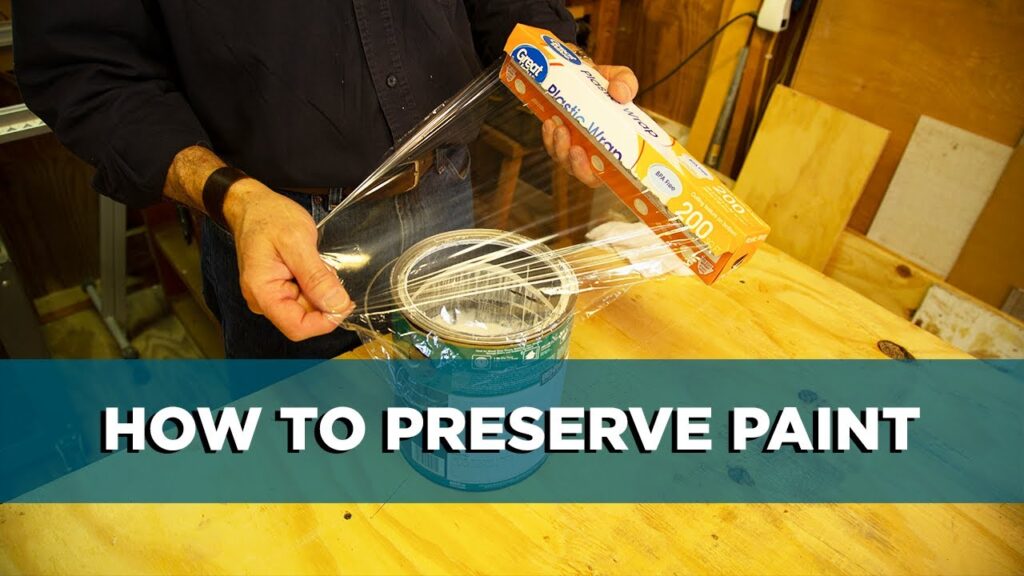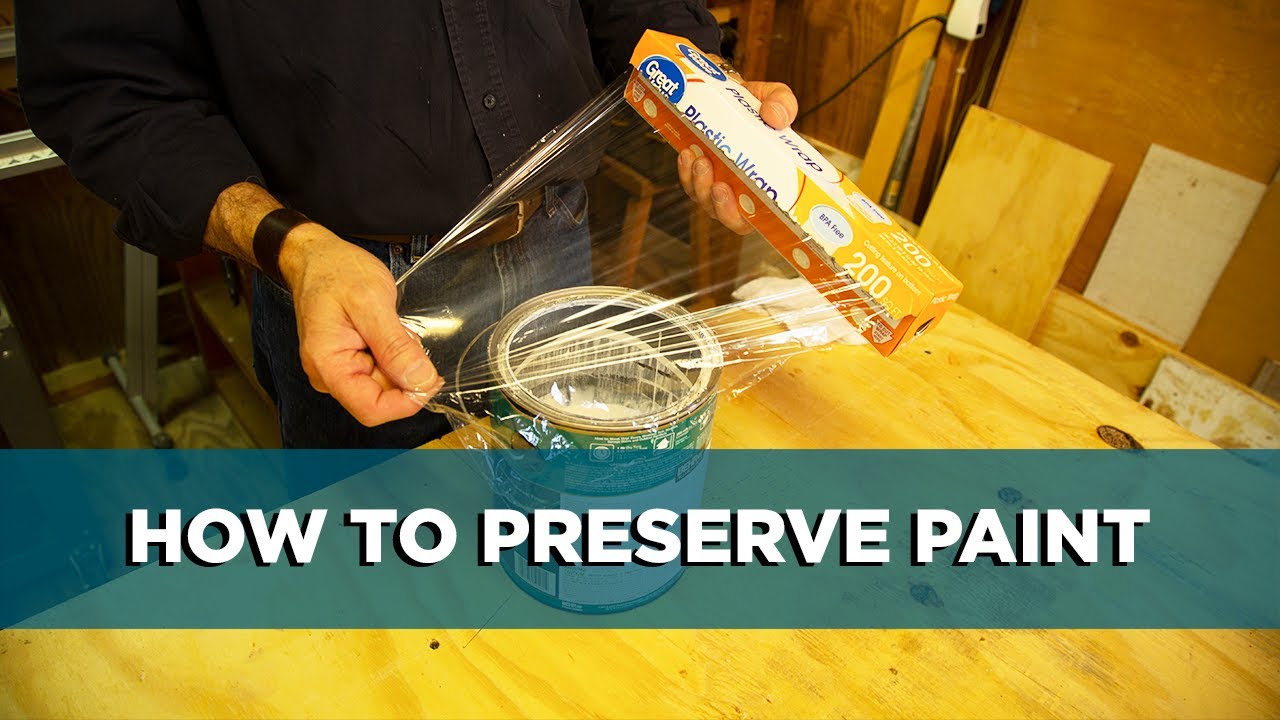
How Do You Open a Can of Paint? A Comprehensive Guide
Opening a can of paint might seem straightforward, but doing it correctly can save you from making a mess, damaging the can, or even injuring yourself. Whether you’re a seasoned DIY enthusiast or a first-time homeowner ready to tackle a painting project, knowing the proper techniques is essential. This guide provides a detailed, step-by-step approach to safely and effectively open a can of paint.
Understanding the Anatomy of a Paint Can
Before we dive into the methods, it’s crucial to understand the different parts of a standard paint can. The can consists of:
- The Lid: This is the part you’ll be removing. It’s designed to create an airtight seal to prevent the paint from drying out.
- The Rim: The edge of the can where the lid sits. Paint often accumulates here, making it difficult to reseal the can later.
- The Body: The main container holding the paint.
- The Groove: A small indent around the top of the can that helps secure the lid.
Essential Tools for Opening a Paint Can
Having the right tools makes the job significantly easier and safer. Here are some essentials:
- Paint Can Opener: This specialized tool is designed specifically for opening paint cans. It’s inexpensive and available at most hardware stores.
- Flathead Screwdriver: A flathead screwdriver can be used as an alternative to a paint can opener, but be cautious to avoid bending the lid.
- Hammer (Optional): A hammer can be useful for gently tapping the lid back into place after opening.
- Rag or Cloth: Essential for wiping away excess paint and keeping your workspace clean.
- Safety Glasses: Protect your eyes from splashes.
- Gloves (Optional): To keep your hands clean.
Step-by-Step Guide: Opening a Paint Can with a Paint Can Opener
Using a paint can opener is the recommended method for safely and effectively opening a paint can. Here’s how to do it:
- Prepare Your Workspace: Place the paint can on a stable surface covered with a drop cloth or newspaper to protect it from spills.
- Position the Opener: Insert the curved end of the paint can opener between the lid and the rim of the can. Choose a spot that feels relatively loose.
- Leverage the Lid: Gently rock the opener back and forth to pry the lid up slightly. Avoid using excessive force, as this can bend the lid.
- Work Your Way Around: Move the opener to a different spot on the lid and repeat the leveraging process. Continue working your way around the entire circumference of the lid.
- Remove the Lid: Once you’ve loosened the lid all the way around, you should be able to easily lift it off.
Opening a Paint Can with a Flathead Screwdriver
If you don’t have a paint can opener, a flathead screwdriver can be used as a substitute. However, this method requires more caution to avoid damaging the lid. Here’s how:
- Prepare Your Workspace: As with the previous method, place the paint can on a protected surface.
- Position the Screwdriver: Insert the flathead of the screwdriver between the lid and the rim of the can.
- Leverage Carefully: Gently twist the screwdriver to pry the lid up. Be very careful not to bend the lid excessively.
- Work Around the Lid: Repeat the process at different points around the lid, gradually loosening it.
- Remove the Lid: Once the lid is sufficiently loosened, carefully lift it off.
Dealing with a Stubborn Paint Can Lid
Sometimes, a paint can lid can be particularly difficult to open, especially if it’s been sitting for a while or has dried paint sealing it shut. Here are some tips for dealing with a stubborn lid:
- Clean the Rim: Use a utility knife or a stiff brush to remove any dried paint from the rim of the can.
- Gentle Tapping: Lightly tap around the edge of the lid with a hammer to help loosen the seal.
- Warm Water: If dried paint is the issue, try running warm water over the lid to soften it.
- Patience: Avoid using excessive force, as this can damage the can or cause the lid to bend.
Tips for Preventing Future Problems
Preventing future problems is just as important as knowing how do you open a can of paint. Here are some tips to keep in mind:
- Clean the Rim After Each Use: Wipe away any excess paint from the rim of the can before resealing it. This will prevent the lid from sticking in the future.
- Properly Seal the Lid: After each use, make sure the lid is securely sealed to prevent the paint from drying out.
- Store Paint Cans Upside Down: Storing paint cans upside down creates a seal with the paint itself, preventing air from entering and drying out the paint.
- Use a Rubber Mallet: When resealing the lid, use a rubber mallet to gently tap it into place. This will help create a tight seal without damaging the lid.
Resealing a Paint Can Properly
Resealing a paint can properly is crucial to prevent the paint from drying out and to ensure it remains usable for future projects. Here’s how to do it:
- Clean the Lid and Rim: Remove any dried paint from the lid and the rim of the can. This will ensure a tight seal.
- Position the Lid: Place the lid back on the can, aligning it properly.
- Tap the Lid into Place: Use a rubber mallet to gently tap the lid into place around the entire circumference of the can.
- Check the Seal: Ensure the lid is securely sealed by pressing down on it firmly.
Safety Precautions When Opening and Closing Paint Cans
Safety should always be a top priority when working with paint cans. Here are some important safety precautions to keep in mind:
- Wear Safety Glasses: Protect your eyes from paint splashes.
- Wear Gloves: Protect your hands from paint.
- Work in a Well-Ventilated Area: Ensure proper ventilation to avoid inhaling fumes.
- Avoid Excessive Force: Using too much force can damage the can or cause injury.
- Dispose of Paint Properly: Follow local regulations for disposing of leftover paint and empty paint cans.
Alternatives to Traditional Paint Cans
While traditional paint cans are still widely used, there are alternative packaging options available that can offer some advantages:
- Paint Pouches: These flexible pouches are lightweight and easy to pour from. They also minimize waste.
- Plastic Containers: Some paints are packaged in plastic containers with screw-on lids, which are easier to open and reseal.
- Aerosol Cans: For smaller projects, aerosol cans offer a convenient and mess-free option.
Troubleshooting Common Issues
Even with the best techniques, you might encounter some common issues when opening a paint can. Here are some troubleshooting tips:
- Bent Lid: If the lid gets bent, try to straighten it out as much as possible before resealing the can.
- Paint Splatter: If paint splatters, clean it up immediately to prevent it from drying.
- Stuck Lid: If the lid is stuck, try using a heat gun or hair dryer to warm it up and loosen the seal.
Conclusion
Knowing how do you open a can of paint correctly is a fundamental skill for any DIY enthusiast or homeowner. By following these steps, using the right tools, and taking necessary precautions, you can avoid messes, prevent injuries, and ensure your paint remains usable for future projects. Remember to clean the rim, seal the lid properly, and store the can correctly to prolong the life of your paint. With a little practice, you’ll be opening paint cans like a pro in no time. So, grab your tools, choose your colors, and get ready to transform your space with confidence. Understanding the proper techniques for how do you open a can of paint ensures a smooth and successful painting experience. The key is to be gentle and patient. Mastering how do you open a can of paint will make your DIY projects much more enjoyable. Knowing how do you open a can of paint also helps in maintaining the quality of your paint. Proper technique and storage extend the life of your paint. Always remember safety when considering how do you open a can of paint. Protective gear is essential for a safe painting experience. This comprehensive guide on how do you open a can of paint will assist both beginners and experienced painters. By following these steps, you’ll be able to open a paint can efficiently and safely, avoiding common pitfalls and ensuring a smooth start to your painting endeavors. Now you can confidently approach your next painting project knowing exactly how do you open a can of paint.
[See also: How to Choose the Right Paint Brush]
[See also: Best Interior Paint Colors for 2024]
[See also: Essential Painting Tools for Beginners]

